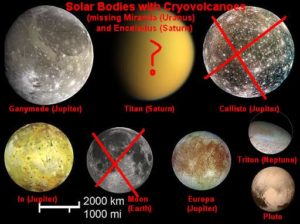New Horizons’s LORRI explored Neptune’s Triton as similar in size to Pluto.

Triton was considered similar to Pluto in many respects, but mostly in size. It seemed a perfect object on which to test New Horizons’s Long Range Reconnaissance Imager (LORRI).
Add another moon to the New Horizons photo gallery: the spacecraft’s Long Range Reconnaissance Imager detected Triton, the largest of Neptune’s 13 known moons, during the annual spacecraft checkout last fall.
New Horizons was 2.33 billion miles (3.75 billion kilometers) from Neptune on Oct. 16, when LORRI, following a programmed sequence of commands, locked onto the planet and snapped away.
“We wanted to test LORRI’s ability to measure a faint object near a much brighter one using a special tracking mode,” says New Horizons Project Scientist Hal Weaver, of the Johns Hopkins University Applied Physics Laboratory, “and the Neptune-Triton pair perfectly fit the bill.” LORRI was operated in 4-by-4 format (the original pixels are binned in groups of 16), and the spacecraft was put into a special tracking mode to allow for longer exposure times. “We needed to achieve the highest possible sensitivity,” Weaver adds.
Mission scientists also wanted to measure Triton itself. “Among the objects visited by spacecraft so far, Triton is by far the best analog of Pluto,” says New Horizons Principal Investigator Alan Stern. The Voyager 2 spacecraft took spectacular images of Triton during its flyby of Neptune in 1989, showing evidence of cryovolcanic activity and cantaloupe-like terrain.
Triton is only slightly larger than Pluto (1,700 miles [2,700 kilometers] in diameter compared to Pluto’s 1,500 miles [2,400 kilometers]). Both objects have atmospheres primarily composed of nitrogen gas with a surface pressure only 1/70,000th of Earth’s, and comparably cold surface temperatures (-390̊ F on Triton and -370̊ F on Pluto). Triton is widely believed to have once been a member of the Kuiper Belt (as Pluto still is) that was captured into orbit around Neptune, probably during a collision early in the solar system’s history.
Returning to Pluto: To see a summary of what we have learned so far about the mountainous regions of Pluto, after the flyby on July 15, 2015, visit the next page.



